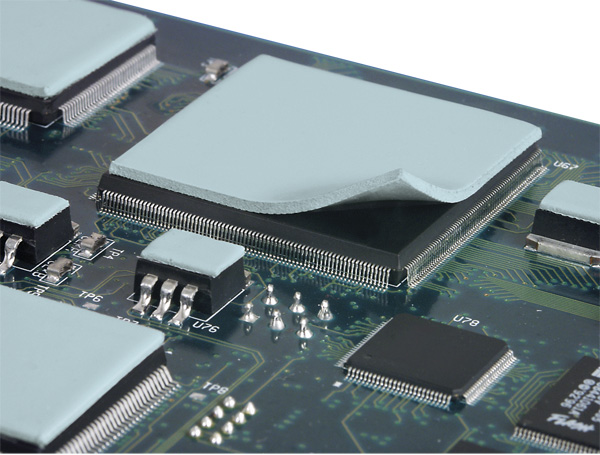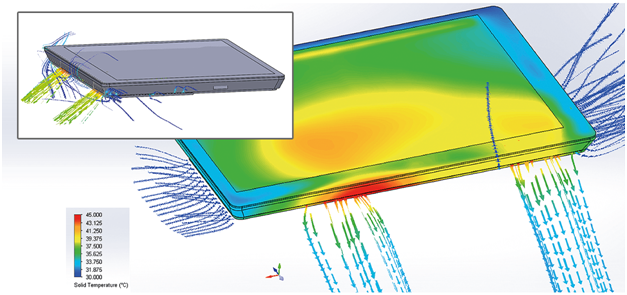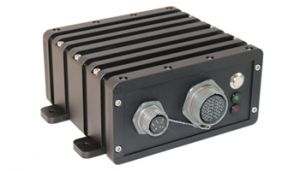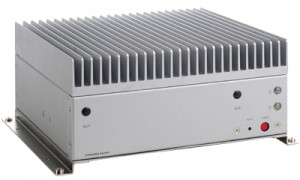What is a Fanless Embedded Computer?
The way industry utilizes computers has developed to include applications inside the computers, known as embedded PC. How exactly is embedded PC different from the everyday PC? Embedded computers offer control ability in a small box and ready to use in an industrial environment with flexible operating systems. An embedded computer, also known as an embedded PC, is a computer system that is implemented into a larger system or intelligence system commonly used for data collection or modern interactive tasks. Embedded computers come in various shapes and sizes fit for industrial or military applications. Moreover, embedded computers play an important role in the Internet of Things (IoT) and the connection between machines, people, and places.
What are Embedded Computers used for?
Embedded computers are used in many industries in the world. Most of the industries required high-performance computers that can integrate into the existing device easily. Embedded computers are referred to as self-contained PC that are used as part of a larger system. Moreover, embedded computers serve as data collection or modern interactive tasks. Embedded computers are a technology that people and the smart system can rely on nowadays. There are several benefits of using an embedded computer in a larger device or system. First, embedded computers offer a number of important advantages over regular consumer PC. With the low maintenance feature, the embedded computer itself provides reliability inside complex systems. Industrial computers are designed with a fanless enclosure and a passive cooling system that helps the embedded system to remain sealed while reducing heat. The removal of the fan decreases failure rates, reduces noise, and provides space for integrated components. Furthermore, most of the environmental damages included dust, water, and vibration. Therefore, stronger protection such as metal steel or IP-rated housing can reduce environmental damages.
Advantages of Embedded Computers
Industrial applications require a demand for systems that can operate efficiently in unpredictable settings and harsh environments. Most of the times, certain settings can take a real toll on computers whether it is due to dusty air, debris, heat damage and even a shortage of proper maintenance; this can potentially damage conventional computers from performing well in the industry. New technological advances are designed to fight the obstacles like overheating, and dust build-up that these harsh environments will bring. This requires improvements for regular working computers and they include a removal of all moving components and the fans of the systems. By doing this, these fanless computers will deliver noise-free applications, excellent thermal controls, dust immunity, and energy efficiency.
How Conventional Computers Work
Before we explore the many advantages of fanless embedded computers, let's take a look at how fanned computers work. One of the greatest dangers that can jeopardize a computer system is heat. Industrial applications are generally in a great deal of demand and therefore require a lot more energy. But when energy is lost, it is transformed to heat. This heat can not only be very damaging but can decrease the overall performance of a system, so in order to combat this problem; fans are installed to remove the heat from the computers. However, these fans come at a price. Computer fan’s only role is to repel heat from a system, but they invite an entrance for dust and harmful particles that will lead to machine failure. Taking out these fans will require a system that can expel heat more efficiently than regular computers.
Farewell to Moving Parts
Whether industrial applications require the movement of computers or when environments create harsh debris and dust traditional computers will usually lead to machine failure. Moving parts like a fan attract dust and particles and more than likely to fail at their applications. The benefits of fanless systems eliminate the risks of being in harsh environments. They can withstand the random vibrations, shock, and particles that can damage a system from the inside making it a more reliable and efficient way for industrial operations.
Exploring the Components of Industrial Fanless Embedded Computers
Now that we know fans are out of the picture for productive industrial applications, its time to bring in the advanced technologies of fanless computers. Cooling without fans is a little more complicated, however, it is absolutely reliable. Systems that do not use a fan for a cooling system have an electronic device called a heatsink. There are two types of heatsinks, active and passive. Active heatsinks consist of a fan that repels heat away from the CPU chip beneath it. However, for more reliable ways of repelling heat, fanless passive heat sinks are a preferred option. CPU’s or Central Processing Units are known as the brain of the computer. These CPUs can usually generate a lot of heat and become severely damaged without a cooling system. The passive heatsink is designed to lie on top of the CPU, initiating a passageway for the heat to transfer through the fins on top of the CPU and removed it. Although passive heatsinks are larger than active heatsinks, it is a lot more beneficial and advanced at cooling the system. If the fan of the active heatsinks somehow fails in a way and overheats, the CPU can become damaged. Furthermore, a completely fanless system allows the computer for noise-free operations.
Composition of Heatsinks
There are two elements that contribute to the thermal conductive efficiency of the heatsink. The first is aluminum because of its excellent thermal conductivity and its lightweight in nature. The next element is copper. Although it is much heavier than aluminum, copper is way more efficient at thermal conductivity compared to aluminum because it allows its electrons to maneuver freely. Passive heatsinks may include these elements separately or together.
Thermal Conductivity

Because the enclosure of the heatsink or CPU is never perfectly flat, there will be gaps between them when you place the CPU straight on the heatsink. As a result, this will produce detrimental effects on the process of heat transfer. This is where the technology and the role of thermal compounds come into performance. Thermal compounds are a solution that is gooey and sticky in nature that regulates the thermal conductivity between the gaps of the CPU and heatsink. Aside from the gooey solution, there is an alternate thermal compound called the ‘thermal pad’. Thermal pads are designed to replace a sticky solution and are a more convenient and popular choice for thermal conductivity and long-term production. Industrial computers play a viable role in the industrial environment. This article explored the many benefits of fanless computers including how it combats problems of overheating through active and passive heatsinks with the aid of thermal pads, dust, and damaging particles and how fans usually set its self up for failure in the long run. Conventional computers are acceptable for everyday private use, but for industrial and demanding applications and wide-ranging environmental temperatures, fanless technology avoids overheating and delivers efficiency and reliability. Fanless systems are smaller and more compact. Because they are fully enclosed, these systems have the ability to operate quietly and dust-free indoors and outdoors. Flexibility equals productivity.
Thermal Design for Embedded Computers
As designs get smaller, power densities at all packaging levels increase dramatically. Removing heat is critical to the operation and long-term reliability of electronics. Component temperatures within the specification are the universal criteria used to determine the thermal design for embedded computers. Cooling solutions directly add weight, volume, and cost to the product, without delivering any functional benefit. What they provide is reliability. Without cooling, many electronic products would fail in a matter of minutes. Leakage current, and this leakage power, goes up with smaller die-level feature sizes. Because leakage is temperature-dependent, thermal design is more important. Cooling solutions have been implemented in embedded computers resulting in fanless embedded computes. Electronics cooling, or thermal design, is part of the product creation process. Some organizations consider thermal design to be part of the mechanical design of a product. This is most common in traditional industries such as automotive, where the electronics content of a product has, until quite recently, increased slowly over time.
Engineers and the design environment can influence how thermal design is implemented. Both the type of product being developed and the volume in which it will be produced, also have an influence. In traditional industries where computational fluid dynamics (CFD) are used to investigate product performance (e.g. aerospace, nuclear, and automotive), design times are relatively long and safety and reliability are prioritized over increasing product lifetime by reducing component temperatures by some safety margin. The effort is spent on building redundancy into the cooling system so that, if a fan fails, the system can still operate well within specification and the fan can be replaced while the system is in operation.
Minimization of electronic products leads to increasingly cluttered and complex geometries, with ever-tighter integration of the electronic and mechanical aspects of a product. One upshot of product miniaturization is that the flow spaces are reduced, often limiting the scope for convective cooling. These small spaces cause the flow to laminarize, with turbulence levels dominated by wall-generated shear. This actually reduces the numerical demands on capturing the effects of turbulence. Over time, the temperature rise within the air has a diminishing contribution to the temperature rise of the junction within the IC package above ambient.
An important aspect of the thermal design is to determine which uncertainties in the model have the greatest effect on critical component temperatures. Once these have been assessed, efforts can be directed toward improving those aspects of the design, both through design changes and by obtaining more accurate data for the simulation. The current state-of-the-art methodology is to uses measurement to underpin the simulation process. As such, customers have been able to significantly reduce the time required to close the thermal design, reduce the cost of the thermal design effort, and achieve a model fidelity that can predict temperature rises above ambient. This inverts the traditional process of using physical prototyping after the design is complete to correct design mistakes.

Industry 4.0 Transforming Manufacturing
Industry 4.0 system gives flexibility and connectivity which makes it easier for users. Furthermore, flexible manufacturing allows the factory to produce more products using the same equipment. Industry 4.0 also brings convenient maintenance to the factory. Factories only need to replace the modularized faulty components for repair, without sending the entire product. Modularized IPCs allow specific applications and selecting areas from a single product to upgrade or downgrade as customers’ requirements. The diversity in modular options allows users to choose specific configurations according to their application requirements. With modularize platforms, it is easy to maintenance and upgrades certain parts of the whole unit. Modularizing platforms also reduce the cost of users because users only pay for the features they required. Therefore, the ability to detach and replace defective modules minimizes maintenance efforts and costs.
Smart manufacturing is manufacturing with the target of developing the concept of generation, construction, and product activity. In addition, industrial computers help to communicate, control, and collect important data faster. Therefore, smart factories need industrial computing to run efficiently and maintain the factories with more technologies than human powers. Smart manufacturing takes advantage of advanced details and manufacturing technologies in order to enable flexibility in processes to address the information to the market. With smart manufacturing, industries achieve higher control ability and faster response times. Therefore, smart manufacturing increases overall equipment effectiveness. When using the system of smart factories, how does the data exchange in manufacturing technology? Industry 4.0 is the current trend for data exchange in manufacturing technologies. Furthermore, industry 4.0 includes the Internet of things, cyber-physical systems, and cloud computing nowadays. Moreover, within the modular structured smart factories, the systems can monitor physical processes and make decisions. With the Internet of Things, cyber-physical systems pass the messages to communicate with people in real-time.
Embedded Computer and its Significance in Technology
Embedded computers and their significance in technology include a specific function within a larger computerized system. All of the parts come together to form an enclosure that is designed specifically for industrial applications like POS, transportation, or control to provide higher reliability. Embedded computers are embedded as part of a complete device, often including hardware and mechanical parts. By contrast, a general-purpose computer, such as a personal computer (PC), is designed to be flexible to meet a wide range of end-user needs. Embedded systems control many devices in common use today. Embedded systems contain processing cores that are either microcontrollers or digital signal processors (DSP). A processor is an important unit in the embedded system hardware and is considered the heart of the embedded system.
The key characteristic of an embedded system is its ability to handle a particular task. The system was made so that the unit is smaller in size, but it can handle more performance. Embedded systems range from portable devices, such as digital watches and MP3 players, to large stationary installations, such as traffic lights, factory controllers, and largely complex systems like hybrid vehicles, MRI, and avionics. Fanless embedded computers include a low power consumption processor and a fanless embedded board. It has an aluminum heat sink and heavy-duty steel frame that allows the unit to work under a wide range of temperatures in a harsh environment. The multiple expansion slots and rich interface ports are designed specifically for automation control applications.
Acnodes Fanless Embedded Computer & Fanless Industrial PC Series
 Fanless embedded computers are embedded computer systems integrated into a larger device or system for data collection and modern interactive tasks. Acnodes fanless industrial pcs feature high-performance processors with a fanless cooling system and rugged construction for harsh environments such as factories and manufacturing industries. All of the fanless industrial computers are reliable, customizable, and tailored for Industry 4.0. Designed for industrial applications and IoT devices, these fanless embedded PCs have increased reliability, extended MTBF, and reduced maintenance to help maximize performance.
Fanless embedded computers are embedded computer systems integrated into a larger device or system for data collection and modern interactive tasks. Acnodes fanless industrial pcs feature high-performance processors with a fanless cooling system and rugged construction for harsh environments such as factories and manufacturing industries. All of the fanless industrial computers are reliable, customizable, and tailored for Industry 4.0. Designed for industrial applications and IoT devices, these fanless embedded PCs have increased reliability, extended MTBF, and reduced maintenance to help maximize performance.





